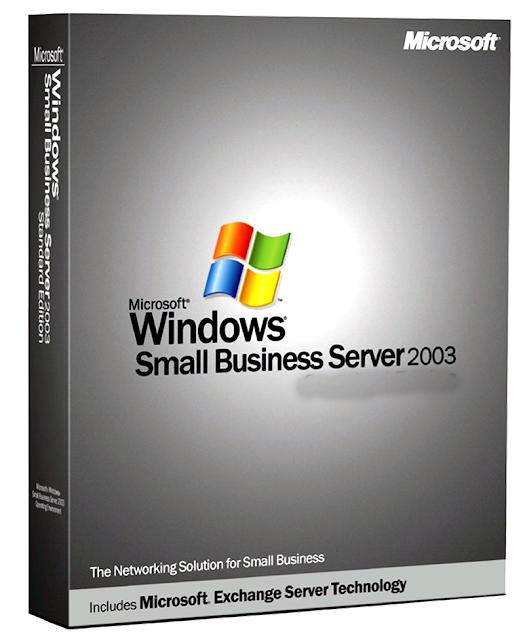Shop from the world's largest selection and best deals for Microsoft Windows Server 2003 R2 Operating System Software. Shop with confidence on eBay! Windows Server 2003 32-Bit Update Disk, and Windows Server 2003 / XP 64-Bit Update Disk. Microsoft Windows Small Business Server 2003 R2 - OS Install Disk.
- Windows Server 2003 Standard Download Free Latest OEM RTM version. It is Full Bootable ISO Image of Windows Server 2003 Standard. Windows Server 2003 Standard Overview. Windows Server 2003 Standard is an operating system that has been developed for.
- Nov 1, 2017 - It is called Microsoft Windows and Office ISO Download Tool or Windows ISO. The file you download a small 'Windows ISO Downloader.exe' that has. Two download buttons: one for the 32-bit version of Windows 10.
If you're a small business wanting to squeeze as much from your IT budget as possible, you might be looking to jettison that aging Microsoft Small Business server. If that's the case, what choices do you have? You'll need:
- Mail server
- Groupware server
- Directory server
- Printer sharing
- Backup
- DHCP/DNS
- Certificate Authority
- Web server
- Gateway
- Unified threat manager
The list goes on and on. For most small businesses, there has only ever been one solution — Microsoft. However, with the acceptance and popularity of open source rising, more solutions are popping up to help businesses cut that tie with Windows.
Zentyal is one solution. Zentyal Community Edition is a free, open-source all-in-one server that includes all of the features listed above. Plus, you get Samba4 integration, so it's a perfect replacement for that aging Active Directory server. One of the best parts about Zentyal is that you can take advantage of less powerful hardware. Even though there's a graphical interface, the server is fully administered via a web browser (which means you can manage it from anywhere on your network).
The one caveat to Zentyal is that you can't run it as a live CD. So, in order to kick the tires, you'll have to do a full install. However, that installation is quite simple. Just follow these steps:
- Burn a CD of the ISO image (Brasero does a great job with this)
- Put the CD into the drive
- Boot the machine
- Answer a few questions (your primary network interface, time zone, username/password, etc)
The installer is an old-school NCURSES system, so there's no point and click. Instead, navigate with your arrow and tab keys.
Note: During the installation, when setting up the network information — pay close attention to what you're doing. If you mess it up and wind up with a non-working network in Zentyal, solving this problem could mean re-installation (unless you know precisely how to manually edit the /etc/network/interfaces file).
Also a word of warning: Do not complete the install from a remote web browser, because you'll get disconnected.
Once you've installed the system (it should take about 20 minutes), you can then log onto the web-based interface and start working with Zentyal. That's when the real fun begins. When you log in as your Zentyal user, you must decide which packages to install (Figure A).
Figure A
Package selection begins here.
You can select one of the four base installations (Gateway, Infrastructure, Office, Communications) that will automatically pick from the packages listed. Once you've picked your base installation, you can also add other packages from the listing in the bottom half of the screen. After you've made your final selection, click the Install button at the bottom of the screen and the process will begin.
Depending on how many packages you've selected, this process can take some time (for example, the Office core minus the VPN and adding the OpenChange Server is a whopping 750 packages). You'll be presented with a package confirmation window (Figure B). Click OK to proceed with the installation.
Figure B
Confirmation of package installation.
After the installation of the packages is complete, you'll have to take care of the initial configuration of Zentyal. This mostly consists of defining a network interface for external traffic and one for internal traffic (though Zentyal only requires one interface). You also must choose the local domain associated with your server. Finally, you must set the server as either standalone or to retrieve user information from an Active Directory server.
Eventually, your Zentyal server will be complete and you can log in and start setting it up to meet your company needs. You'll also gain access to the Zentyal Dashboard (Figure C).
Figure C
The Zentyal Dashboard.
From the Zentyal Dashboard, you can manage every aspect of your server. As you go through each module, you'll find Zentyal does a great job of guiding you to the right modules. For example, I jumped right to the OpenChange setup, only to be directed to the Virtual Domains and DNS modules first (Figure D).
Figure D
Zentyal helps to guide you through setup.
At this point, you have plenty to set up. What you set up will depend on your needs and what you've installed. Should you find a feature/functionality missing, you can go to Dashboard, then to Core | Software Management, and add the missing components.

If you're looking for a drop-in replacement for Windows Small Business Server, look no further than Zentyal. It has all the features you're used to enjoying, but without the associated costs. Small- to mid-sized businesses now have the perfect solution with the perfect price tag.
Is Zentyal a solution you might look into to replace your aging Windows Small Business Server — or maybe to just help expand the functionality of your back office? Let us know in the comments below.
Windows 2008 32 Bit Iso
Only the product information is available on this page.
From Microsoft:
Comments are closed.